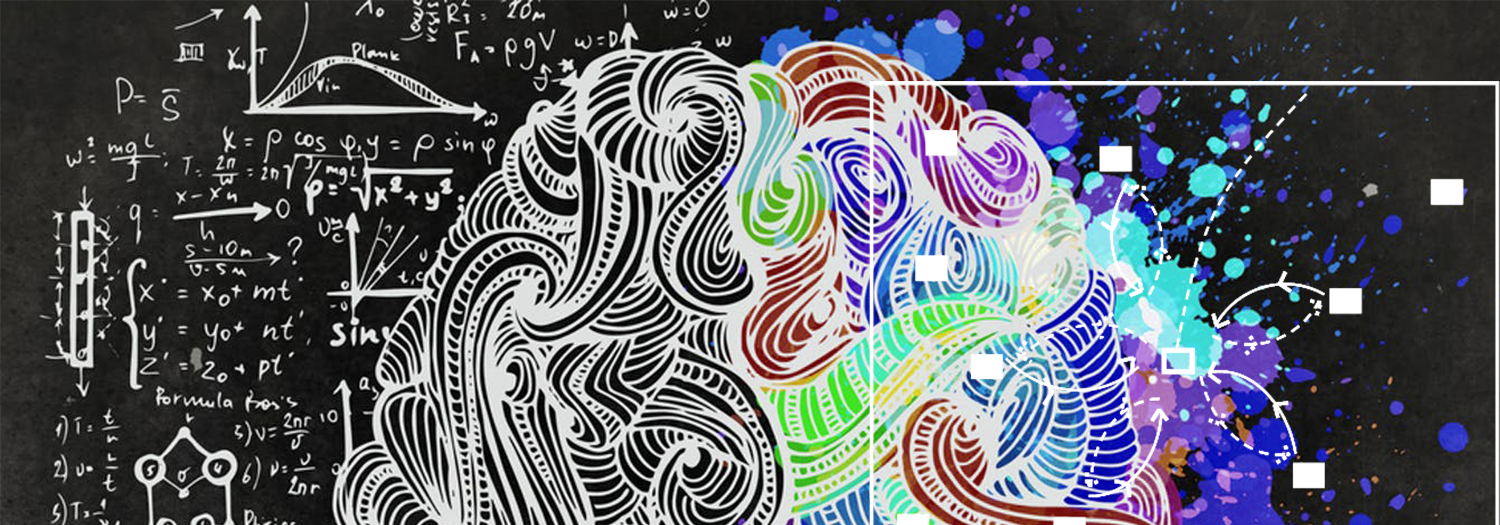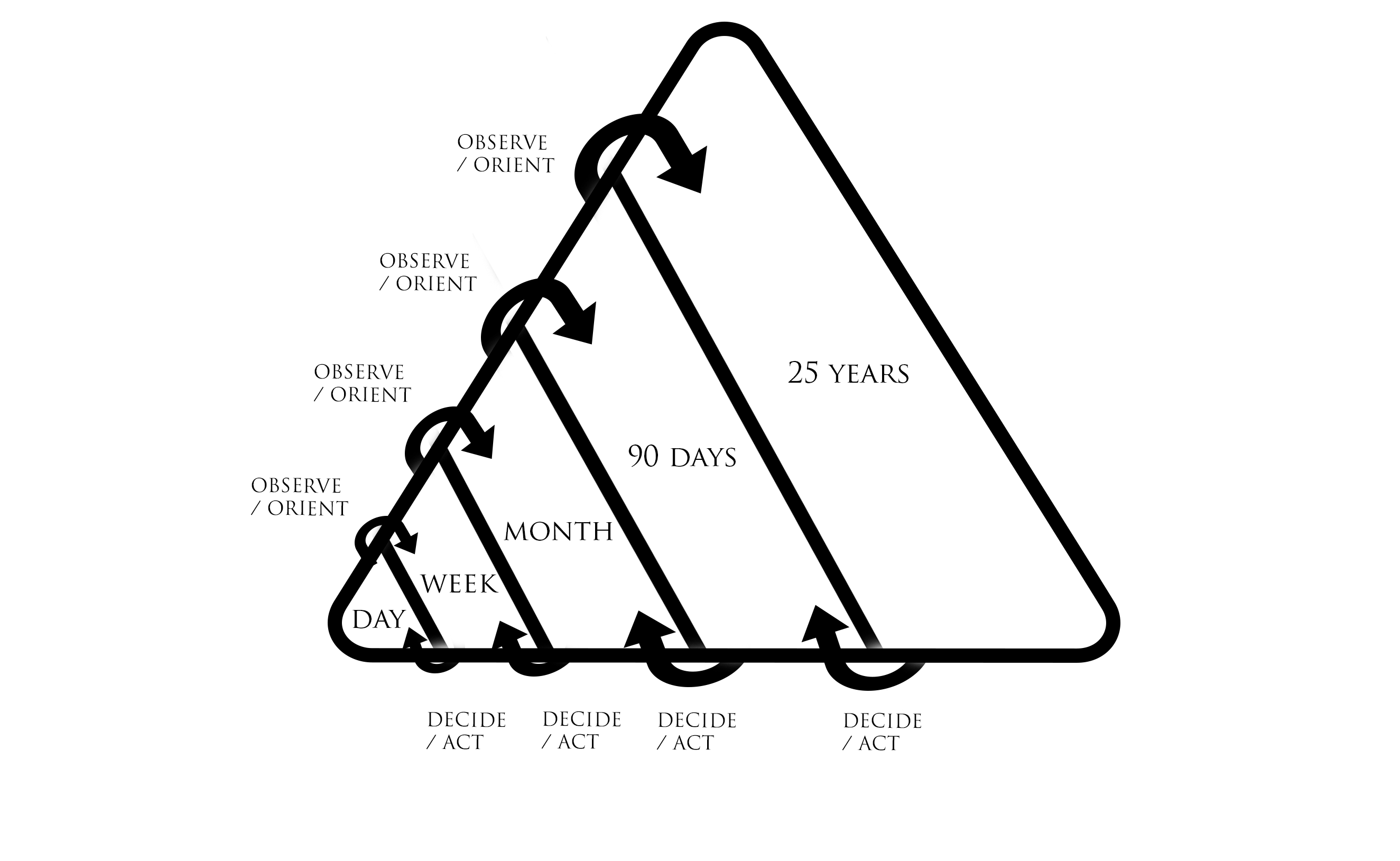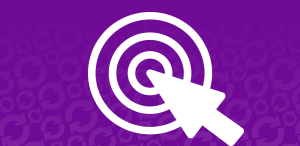— December 31, 2018

Over the course of our lifetimes, the size of multinational businesses will approach that of small, local businesses. On its face, this may sound like a somewhat mundane statement, but the implications on our life are no less significant than the shift from a manufacturing-based industrial economy to a services-based knowledge economy in the 20th century.
Over the last fifty years, people that built their careers in the knowledge economy came out a lot better than those who built their careers in manufacturing.
In this article, I’m going to explain why I think we are witnessing this shift now and some of the essential skills and mindsets we must take on in order to prepare.
In the same way that the middle manager was the archetype of a successful career in the 20th century, I believe that the blockchain individual will the be the archetype of the successful career in the 21st century.
Instead of having our work mediated by large corporations, our work will increasingly be mediated by markets. We will become full stack freelancers.
We’ve seen the first wave of this under a few different names – freelancer nation, gig economy, and sharing economy, but all get at the same central point: The firm is breaking up and changing how careers work.
Why Should You Care?
Those who adapt to this new paradigm will fare far better than those who continue following the scripts of a prior age. This is not a new idea, but it’s important to keep it mind.
A traveler was walking through a medieval town and saw three stone masons working on a stone wall. He asked the first what he was doing. The first mason spat back, “cutting stones.” Still curious about what they were actually constructing, he asked the next stone mason, who replied “building a wall,” before going back to work.
The traveler went on and asked the final stonemason what exactly they are building. He replied, “a monument.” The mason went on to talk about the historical significance of the monument, explaining that it represents someone who saved the townspeople from a disaster. He talked about the future possibilities of the monument, how people will come from miles around to visit the monument, which will bring prosperity to the village.
All three of the answers are technically correct. The only difference is the time frame. The first stone mason is “cutting stones” (short-term). The second is “building a wall” (medium term). The last is “building a monument” (long-term).

There are two key components to the success of the stonemason:
- Having the vision to see what small actions are building up to stay excited and motivated about work.
- Knowing how to do that day-to-day work
This has always been true.
However, there are two major differences between how these things are done successfully today versus two centuries ago.
The first is that we now have to choose what exactly it is to build. The medieval stone mason had relatively few career opportunities. Today, we get stressed about too many opportunities, we “FOMO,” a term that only recently made no sense. Medieval stone masons don’t FOMO.
Not only do we have to choose from many more options, but we have to choose many times over the course of our careers. According to a recent report from Dell Technologies, 85% of the jobs that will exist in 2030 didn’t exist as of 2017. Today, careers must not just be created once, but re-created over and over again. We must engage in continuous priority management.
The second shift is that we increasingly have to manage our own continuing education and improvement. The stonemason learned to cut stones and used that skill for the rest of her life. IBM famously had a two-year training program for all new employees up through the 1970’s. If you joined IBM, you didn’t have to think too much about what skills you needed to develop — IBM had the curriculum all laid out.
Compare that to today. The world’s best designers, developers, and marketers are nearly all self-taught autodidacts. They are deliberately going out and finding the best information sources and learning from them. The path for each is highly individual, geared to unique combinations of strengths and weaknesses. We must engage in continuous knowledge management.
Learning to adapt to the first shift means adopting a system of personal priority management (PPM). Instead of being able to simply follow the script laid out in front of us, we have vastly more options.
The mistake many people make is that they refuse to decide. They try to choose all the options at once and become so stretched thin that they end up succeeding at none of them. This was a problem I ran into many times myself and why I built a strategic planning masterclass that has helped hundreds of students have since used to think through what their cathedral is and the steps it will take to get there.
Learning to adapt to the second shift part of that equation means adopting a system of personal knowledge management (PKM). Unlike the stonemason or IBM Organization Man, there isn’t a predefined script or path for how to take those steps. learning how to actually cut the stones, those steps today are all about continuous learning.
How we manage this is no small task. Most people feel trapped between drowning in the information input deluge of courses, books, newsletters, articles, and tweets or cutting themselves off entirely to generate some sort of work output.
This is a dangerously false dichotomy. Personal Knowledge Management means continuing to stay open to new sources of information. To not do so is to become irrelevant. PKM instead focused on processing new information in a way that allows it to be translated to usable knowledge and eventually into career-advancing outputs.
It is a system that is the knowledge worker equivalent of not just how to cut stones but how to continuously improve at cutting stones. It is about how to best process the information coming in a way that consistently improves the quality of your output. It is how to turn optimizing for interesting into tangible career capital.
Beyond that, I believe it is an essential component to creativity. What most people mean when they say creativity is an ability to put together existing components in a novel and useful way. The inventor of the snowmobile did not invent any new parts, but put together treads that already existed on tanks, handlebars that existed on bikes and skis that went on feet.
Being able to do this requires having a system for finding, categorizing and then putting those components to use.
The Three Pillars of Personal Knowledge Management
PARA
Systems for organizing physical clutter have become extremely popular, but there are few widely accepted or standardized approaches to organizing our digital files. Digital hoarding can create a drag on our productivity, effectiveness, and sanity. PARA, which stands for projects, areas, resources, and archives, is a taxonomy for organizing all your digital files.

- A project is “a series of tasks linked to a goal, with a deadline.” These are things like completing an app mockup, writing a blog post, or hosting a conferenc
- An area of responsibility is “a sphere of activity with a standard to be maintained over time.” These are things like Health, Fitness, Taxes, Investing, Travel, Apartment, Direct Reports, and Product Development.
- A resource is “a topic or theme of ongoing interest.” These are things like SEO, book notes, business ideas, architecture, or complex systems.
- Archives include “inactive items from the other three categories.” This is a catch-all for whatever doesn’t fall in one of the earlier categories, like projects that have been completed or become inactive and areas that you are no longer committed to maintaining
This system mirrors how we work. We spend our days completing tasks (like writing the first draft of a blog post) which is part of a project (like a new product launch) which is part of an area like product development.
Product development would be one of many areas you may be responsible for, like financial reporting, hiring, business strategy, or your fitness.
Having this standardized taxonomy makes it possible to organize your workflow across different platforms.
A project is a project whether it is in your task manager, Evernote, Dropbox, Google Drive or anywhere else.
This makes it possible to sort all the incoming information in a way that makes it actionable and productive. That article you saw about conversion rate optimization or Haskell development can be added to the relevant project so that next time it comes up, you have it, along with other relevant information, at your fingertips.
It is also much better for motivation. Each task (e.g. cutting a stone) can be related to a project (e.g. building a wall) which can be related to an area (e.g. stone masonry) which can be related to an exciting and motivating goal (e.g. building a monument).
In my masterclass, I call this vertical coherence and it’s the most important component to sustaining motivation over the long run.

Progressive Summarization
The next component of PKM is Progressive Summarization (PS), a technique for formatting and structuring information to turn it into usable knowledge and make it easily discoverable and implementable in the future. This ensures that information you’re saving today adds value to your future projects, even when you can’t predict or imagine what those projects might be.
What you read, watch and listen to is all good and useful and important, you’re just consuming it at the wrong time.
You’re reading about time management techniques now, but they will only be useful two years from now, when you become a manager and have much greater demands on your time.
You’re watching YouTube videos on online marketing now, but that knowledge can only be put to use in 9 months, when your new online course gets off the ground.
The challenge in today is not acquiring information; it’s all just a Google search away. The challenge is knowing which information is worth acquiring, then building a system to convert that information to knowledge which can be used in a future situation where it is applicable.
This is the job of a “second brain” — an external digital repository (e.g. Evernote) for the things you learn and the resources from which they come. It is a storage and retrieval system for sorting bits of information into knowledge that can be retrieved when it is needed.
The first step is to save these notes in the applicable section of your PARA system. So a good article you read on how Google screens employees might be filed away into a notebook in your Area section called “Hiring.”
I started doing this quite a few years ago and it can be very helpful, but before long, you run into a pretty big problem:- too much information becomes unusable. Once you have a hundred articles in your Hiring notebook, it could take you days to go through them. When you are in the midst of the hiring process, you need to be able to find the most relevant information as quickly as possible.
Enter progressive summarization (PS). Layer 1 of PS is creating notes: be it a saved article, notes your took at a conference, or an idea you jotted down on the way to work from an audiobook you were listening to. As an example, let’s say I just found an article on Google’s hiring process that I saved to my hiring notebook.
Layer 2 is the first round of true summarization, in which I bold only the best parts of the passages I’ve imported. I have no universal criteria. I look for keywords, key phrases, and key sentences that I feel represent the core or essence of the idea being discussed. This is personal knowledge management, so what matters is what I think is important. I typically do this at the end of the day or prior to my weekly review.
For the hiring article I found, I may read through it in Instapaper or Evernote and bold relevant sections.
For Layer 3, I switch to highlighting so I can make out the smaller number of highlighted passages among all the bolded ones. This time, I’m looking for the “best of the best,” only highlighting something if it is truly unique or valuable.
I’m only doing this if I have some reason to be going through the note in the first place. In the case of hiring, I might be going back through the bolded bits of the best articles in my Hiring notebook and adding highlights.
For Layer 4, I go beyond highlighting the words of others, to recording my own. For a small number of notes that are the most insightful, I summarize layers 2 and 3 in an informal executive summary at the top of the note, restating the key points in my own words.
I often do this after I highlight notes, so in the case of hiring, I know that next time I can go back and just read the key points.
And finally, for a tiny minority of information, the ones that are so powerful and exciting I want them to become part of how I think and work, I remix them.
After pulling them apart and dissecting them from every angle in layers 1–4, I add my own creativity to turn them into something else.
In the case of hiring, this might mean taking my most important highlights and summaries and turning them into a standard operating procedure (SOP). This SOP now contains the best information on hiring I have found, not just in an afternoon of googling around, but over the course of years. This becomes valuable intellectual property, a form of competitive advantage and career capital.
Just-in-Time Project Management
The final component of personal knowledge management is Just-in-Time project management. Much has been written about the importance of deep work, longer periods of uninterrupted work, over the last few years. I’m a proponent and believe there’s a lot to be said for finding times in your work week where you can have three or four uninterrupted hours to tackle a big project.
But what about the rest of the week? How can you get the most out of that one free hour between meetings on Thursday afternoon?
The challenge with deep work for most people is that there are a lot of set up costs. You need to set up your
- Environment – make coffee, plug your computer in, open up the programs you need.
- Mental state – remember where you left off and re-loading mental RAM around the project
- Emotional set up – telling the inner critic to shut up and pushing through uncertainty surrounding a challenging task.
For a typical two to three-hour deep work session, the first thirty minutes (or more) is spent getting ready to do tangible work that you can show to someone else, be it a colleague, manager or client.
With this system, it means that Thursday afternoon hour between meetings is nearly useless. By the time you actually get started, it’s time to quit.
The solution for what to do with that hour on Thursday afternoon is to strategically structure your work in the first place into a series of intermediate packets, that can be done in smaller chunks of time.
Instead of delivering one big lump of value at the very end, you organize your progress in a series of short sprints each ending with a tangible deliverable, like a progressively summarized note, brainstorm, lists of examples or a prototype.
Creating a series of intermediate packets has five big benefits.
For one, interruptions become less problematic. If someone interrupts you between the outline and prototype stage, you can more quickly get back on track.
Second, you have more frequent opportunities to get feedback. Instead of spending weeks working on something only to discover you made wrong assumptions, you can reduce your risk and increase your effectiveness by getting feedback at smaller and more intermediate stages. More feedback means a better final product and better marketing.
Third, you can create value in any span of time. If we see our work as creating these intermediate packets, you can find ways to use your time in a more valuable way, no matter how short. Productivity becomes a game of matching each available block of time (or state of mind, or mood, or energy level) with a corresponding packet that is perfectly suited to it.
Fourth, big projects become less risky. Big, ambitious projects feel risky because all the time you spend on it will feel like a waste if you don’t succeed. Before you write the book manuscript, write ten tweets to see if the idea resonates. Then turn it into a blog post. Then a series of blog posts. If you change your mind or the idea isn’t as great as you thought, you still have something to show for it.
Fifth, you gain the ability to reuse previously built-packets for new projects.
Maybe some research you did for an online marketing campaign becomes useful for a new campaign. Or some sketches that didn’t quite make it into an old design give you inspiration for a new one.
My writing output has increased substantially over the last year because of adopting this system. I used to find it hard to write because writing for me meant staring at a blank screen with a blinking cursor and trying to think of something smart to say.
Now, each piece of writing is broken down into smaller deliverables based on progressively summarized notes in my PARA system. I don’t have to come up with something to say from scratch; I just have to piece together the knowledge that I already have.
Conclusion
In short, PKM allows you to be more creative by capturing and organizing information then remixing it in new and useful ways.
While the popular belief about creativity suggests that it is something that happens to the fortunate few in bursts of insight, the truth is that creative work is the result of having a good creative process.
By the time of his death, Edison owned 1,093 patents. He didn’t have a single light bulb moment of insight, he had a process for creating light bulb moments.
The combination of personal priority management and personal knowledge management are essential ingredients to that process. As the work demanded us becomes more and more entrepreneurial, it is also a skillset that will become increasingly valuable.
By establishing a personal knowledge management and priority management system, you’ll have the skills to thrive, no matter your industry.
Business & Finance Articles on Business 2 Community
(58)







